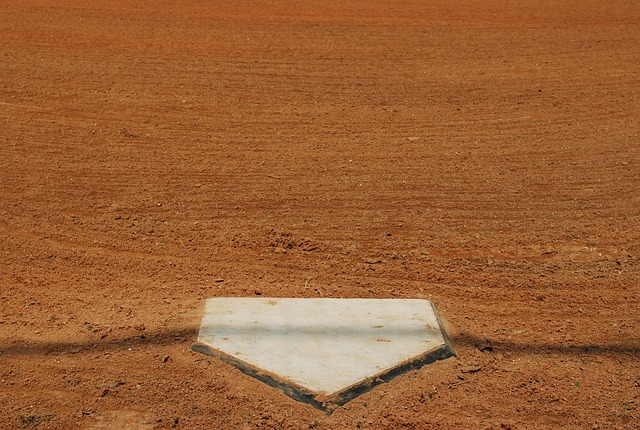Baseball is a sport that has a rich history and a unique set of positions that players assume on the field. From the pitcher’s mound to the outfield, each position in baseball is assigned a specific number that represents its role within the game. These position numbers serve as a universal language for coaches, players, and fans alike, allowing for seamless communication and strategy implementation on the field.
Overview
In this guide, we will explore the different position numbers in baseball and delve into the responsibilities and skills associated with each position. Understanding these position numbers is essential for anyone who wants to fully appreciate the intricacies of the game and follow along with the action on the field.
Whether you’re a seasoned baseball enthusiast or new to the sport, this guide will provide valuable insights into the significance of position numbers and their impact on the overall dynamics of a baseball game. So, let’s dive in and uncover the fascinating world of baseball position numbers.
The 9 Baseball Positions
1. Pitcher
The pitcher is the key player in a baseball game, positioned on the pitcher’s mound. They are responsible for delivering pitches to the batter with the goal of generating outs. Pitchers use a variety of pitches, such as fastballs, curveballs, sliders, and change-ups, to deceive hitters and keep them off balance. Their primary objective is to control the game’s tempo, disrupt the opposing team’s offense, and prevent runs from being scored.
2. Catcher
The catcher takes their position behind home plate. Their role extends beyond simply catching pitches. They are responsible for calling the pitches, signalling defensive strategies, and communicating with the pitcher. Catchers need to be adept at receiving pitches, framing them to earn favourable calls from the umpire. They must also possess strong defensive skills to block pitches in the dirt, throw out baserunners attempting to steal, and make quick decisions on plays at home plate.
3. First Baseman
The first baseman stands near first base and is primarily involved in fielding ground balls, catching throws from other fielders, and covering the base. They are often the recipient of throws from infielders trying to make outs at first base. First basemen also require good defensive skills to stretch for throws, scoop low throws, and make accurate throws to other bases. They serve as a reliable defensive presence and are essential in completing double plays.
4. Second Baseman
The second baseman plays in the vicinity of second base and engages in various defensive aspects of the game. They must field ground balls hit in the middle of the infield, turn double plays with the shortstop, and cover the base during stolen base attempts. Second basemen need to possess quick reflexes, good range, and the ability to pivot and make accurate throws to initiate double plays or make outs at first base.
5. Third Baseman
The third baseman stations themselves near third base and is responsible for fielding ground balls hit down the third base line. They play a crucial role in making accurate throws to first base or home plate, defending against bunts, and reacting quickly to line drives. Third basemen need strong throwing arms, quick reflexes, and solid defensive instincts to handle the hot corner effectively.
6. Shortstop
The shortstop is positioned between second and third base, making them vital defensive players in the infield. They have the responsibility of fielding ground balls hit in their vicinity, making throws to other bases, and participating in double plays. Shortstops need to exhibit excellent fielding skills, range, arm strength, and the ability to pivot and make accurate throws under pressure. They are often considered the captain of the infield, helping coordinate defensive strategies and covering a large portion of the field.
7. Left Fielder
The left fielder defends the area in the left part of the outfield. Their primary responsibility is to catch fly balls hit to their side of the field, prevent extra-base hits, and make accurate throws back to the infield. Left fielders require good speed, agility, and a strong throwing arm to cover their position effectively. They need to be skilled at judging the trajectory of fly balls and positioning themselves to make plays.
8. Centre Fielder
The centre fielder occupies the central portion of the outfield, covering a large area. They are responsible for tracking down fly balls hit to their territory, preventing long hits, and making accurate throws to the appropriate base. Center fielders need exceptional speed, agility, and the ability to read the trajectory of the ball effectively. They often act as the outfield’s captain, communicating and directing the other outfielders during plays.
9. Right Fielder
The right fielder defends the area in the right part of the outfield. Their responsibilities are similar to those of the other outfielders. They must catch fly balls, prevent extra-base hits, and make accurate throws back to the infield. Right fielders require a strong throwing arm, good range, and the ability to react quickly to balls hit to their side. They need to possess excellent defensive skills and work in coordination with other outfielders to cover the field efficiently.
Why Are Baseball Numbers Useful?
Baseball numbers, specifically the position numbers assigned to each player on the field, are incredibly useful for several reasons:
Communication
Position numbers serve as a universal language in baseball. They allow coaches, players, and fans to easily identify and refer to specific players and their positions. This facilitates clear and efficient communication during games, practices, and discussions about baseball strategies and plays.
Strategy and Planning
Position numbers help coaches and teams devise game plans and defensive strategies. By knowing the positions and corresponding numbers, coaches can effectively assign defensive responsibilities to players and make strategic decisions based on matchups and player strengths. It enables teams to position their players optimally to counter the opposing team’s offensive threats.
Scorekeeping and Statistics
Baseball relies heavily on detailed statistics and scorekeeping. Position numbers play a vital role in accurately recording plays, tracking player performance, and generating comprehensive statistics. By associating specific numbers with each player, it becomes easier to record defensive plays, putouts, assists, and other crucial aspects of the game.
Fan Engagement
Position numbers allow fans to easily identify and follow their favourite players on the field. Whether attending games or watching on television, fans can quickly recognize and root for specific players based on their position numbers. It enhances fan engagement and fosters a deeper connection to the sport and individual players.
Historical References
Baseball has a rich history, and position numbers help to create a sense of continuity and tradition. Throughout the years, certain position numbers have become iconic and associated with legendary players. For example, number 3 often evokes images of first basemen like Babe Ruth or Lou Gehrig. Position numbers serve as a link to the past, honouring the players who have left a lasting impact on the game.
In summary, baseball numbers, particularly position numbers, are invaluable tools for communication, strategy, statistics, fan engagement, and historical references. They streamline the understanding and discussion of the game, allowing for efficient coordination on the field and providing a framework for appreciating the sport’s rich traditions and legacy.
Easiest and Hardest Positions
Determining the easiest and hardest baseball positions is subjective and can vary depending on individual perspectives. However, here is a general assessment of the perceived difficulty level of certain positions:
Easiest Positions
The designated hitter’s (DH) sole responsibility is to hit, as they do not have to play a defensive position. They can solely focus on their batting skills without the added defensive pressures.
First base is often considered one of the easier defensive positions. The primary role is to catch throws from infielders and cover the base, requiring less mobility and range compared to other positions.
Right field tends to see fewer challenging defensive situations compared to centre field and left field. The ball is less likely to be hit to right field with the same frequency and velocity, making it relatively easier to handle.
Hardest Positions
Catcher is often regarded as one of the most demanding positions due to the combination of physical and mental demands. Catchers have to handle a pitching staff, call pitches, defend against stolen bases, block pitches in the dirt, and make accurate throws. The physical toll of squatting for long periods of time adds to the difficulty.
Shortstop requires exceptional athleticism, range, and quick reflexes. They are involved in a wide range of defensive plays, including fielding ground balls, turning double plays, and making difficult throws from deep in the hole. The position demands versatility, excellent defensive skills, and strong arm strength.
Center field is often considered the most challenging outfield position due to the vast amount of ground to cover. Center fielders need exceptional speed, agility, and the ability to read the trajectory of the ball effectively. They often have to make difficult plays on deep fly balls and cover more ground than any other outfield position.
It’s important to note that every position in baseball requires a specific skill set and carries its own challenges. The perceived difficulty level may also depend on factors such as individual player strengths, experience, and personal preferences.
Baseball Position Shorthand Notation
In baseball, a shorthand notation is commonly used to represent position numbers. The notation system typically employs numbers ranging from 1 to 9 to denote the different positions. Here’s a breakdown of the shorthand notation for each position:
- Pitcher: P
- Catcher: C
- First Baseman: 1B
- Second Baseman: 2B
- Third Baseman: 3B
- Shortstop: SS
- Left Fielder: LF
- Center Fielder: CF
- Right Fielder: RF
For example, if you were to see “3B” in a baseball scorecard or lineup, it represents the third baseman. Similarly, “LF” would signify the left fielder. This shorthand notation is widely used in baseball scorekeeping, lineup cards, and statistical records to quickly identify and represent each player’s position on the field.
Conclusion
Baseball position numbers serve as a universal language in the sport, allowing for efficient communication and strategic planning. Each position has a specific number associated with it, which helps coaches, players, and fans easily identify and refer to players and their responsibilities on the field. The position numbers are crucial for coordinating defensive strategies, assigning responsibilities, and making strategic decisions based on matchups and player strengths.
These numbers also play a vital role in scorekeeping and generating comprehensive statistics. By associating specific numbers with each player, it becomes easier to record defensive plays, putouts, assists, and other crucial aspects of the game. Position numbers facilitate accurate scorekeeping and provide a foundation for statistical analysis and player performance evaluation.
Position numbers carry historical significance, linking the present to the past. Certain position numbers have become iconic, associated with legendary players who have left a lasting impact on the game.






